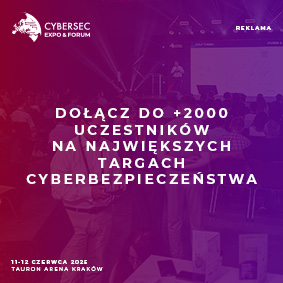Global Lactose Free Food Market Forecast To Reach $29103.34 Billion By 2029 With 11.7% Annual Growth
The Business Research Company's Global Lactose Free Food Market Forecast To Reach $29103.34 Billion By 2029 With 11.7% Annual Growth
LONDON, GREATER LONDON, UNITED KINGDOM, May 20, 2025 /EINPresswire.com/ -- The Business Research Company’s Latest Report Explores Market Driver, Trends, Regional Insights - Market Sizing & Forecasts Through 2034
Will the Lactose Free Food Market Continue to Grow in the Coming Years?
The lactose free food market size has grown rapidly in recent years. It is estimated to grow from $16837.62 billion in 2024 to $18664.86 billion in 2025, marking a compound annual growth rate CAGR of 10.9%. The significant growth during the historic period can be attributed to factors such as increasing awareness of lactose intolerance, greater emphasis on health consciousness, larger prevalence of lactose intolerance, diversification of product offerings, and global shifts in dietary preferences.
Looking ahead, the lactose free food market size is expected to witness rapid expansion in the near future. It is projected to reach $29103.34 billion in 2029, with a compound annual growth rate CAGR of 11.7%. This growth during the forecast period can be attributed to sustained trends in health and wellness, innovation in product formulations, increasing demand for plant-based alternatives, expansion of E-Commerce, the rise of customized nutrition solutions, and fruitful collaborations and partnerships across the industry.
Get Your Free Sample Market Report:
https://www.thebusinessresearchcompany.com/sample_request?id=3083&type=smp
What is Driving the Growth of the Lactose-Free Food Market?
Rising changes in health-conscious consumers and lifestyles are set to propel the lactose-free food market's growth. As more and more consumers become health-conscious and mindful about their dietary choices and daily routines, there is an increasing demand for lactose-free foods to improve digestive health, overall well-being, and cater to specific dietary preferences or restrictions.
Which Industry Players are Driving the Lactose-Free Food Market Growth?
Key industry players including Cargill Inc., Nestlé SA, Groupe Lactalis SA, Danone SA, General Mills Inc., Land O Lakes Inc., Arla Foods Ltd., Fonterra Co-operative Group Limited, Kerry Group plc, Emmi AG, HP Hood LLC, Valio Ltd., TINE SA, Organic Valley Family of Farms., Amy's Kitchen Inc., Freedom Foods Group Limited, Daiya Foods Inc., Edlong Dairy Technologies, OMIRA Oberland-Milchverwertung GmbH, Galaxy Nutritional Foods Inc., Green Valley Organics Foods Ltd., McNeil Nutritionals LLC, Parmalat SpA, Alpro Products Ltd., Dean Foods Co. are influencing substantial growth within the lactose free food market.
Order Your Report Now For A Swift Delivery:
https://www.thebusinessresearchcompany.com/report/lactose-free-food-global-market-report
What New Innovations are Emerging within the Lactose-free Food Market?
There is an increasing trend among major companies operating in the lactose-free food market towards the development of product innovations like lactose-free Greek yogurt to meet the growing demand for lactose-free foods and broaden their product portfolio. Lactose-free Greek yogurt made with A2 milk from Indian cows and live Icelandic cultures, is a promising innovation in this burgeoning market. Unlike traditional Greek yogurt, it is also low in fat and sugar and contains no preservatives.
How is the Lactose Free Food Market Segmented?
The lactose free food market is segmented:
1 By Type: Lactose-Free Products, Lactose-Reduced Products
2 By Technology: Chromatographic Separation, Acid Hydrolysis, Membrane Reactor
3 By Distribution Channel: Super markets/Hyper markets, Online Stores, Other Distribution Channels
4 By Application: Milk, Cheese, Yogurt, Ice-Cream, Non-Diary Products, Other Applications
Subsegments:
1 By Lactose-Free Products: Lactose-Free Milk, Lactose-Free Yogurt, Lactose-Free Cheese, Lactose-Free Ice Cream, Lactose-Free Butter And Margarine
2 By Lactose-Reduced Products: Reduced-Lactose Milk, Reduced-Lactose Yogurt, Reduced-Lactose Cheese, Reduced-Lactose Ice Cream, Reduced-Lactose Cream And Sour Cream
What are the Regional Dynamics of the Lactose Free Food Market?
In 2024, Asia-Pacific was the largest region in the lactose free food market. Western Europe closely followed as the second-largest region in the global lactose free food market. The regions covered in the lactose free food market report include Asia-Pacific, Western Europe, Eastern Europe, North America, South America, Middle East, and Africa.
Browse For More Similar Reports-
Milk Substitutes (Non dairy milk) Global Market Report 2025
https://www.thebusinessresearchcompany.com/report/milk-substitutes-non-dairy-milk-global-market-report
Dairy Alternatives Global Market Report 2025
https://www.thebusinessresearchcompany.com/report/dairy-alternatives-global-market-report
Non-Dairy Yogurt Global Market Report 2025
https://www.thebusinessresearchcompany.com/report/non-dairy-yogurt-global-market-report
About The Business Research Company
Learn More About The Business Research Company. With over 15000+ reports from 27 industries covering 60+ geographies, The Business Research Company has built a reputation for offering comprehensive, data-rich research and insights. Armed with 1,500,000 datasets, the optimistic contribution of in-depth secondary research, and unique insights from industry leaders, you can get the information you need to stay ahead in the game.
Contact us at:
The Business Research Company: https://www.thebusinessresearchcompany.com/
Americas +1 3156230293
Asia +44 2071930708
Europe +44 2071930708
Email us at info@tbrc.info
Follow us on:
LinkedIn: https://in.linkedin.com/company/the-business-research-company
YouTube: https://www.youtube.com/channel/UC24_fI0rV8cR5DxlCpgmyFQ
Global Market Model: https://www.thebusinessresearchcompany.com/global-market-model
Oliver Guirdham
The Business Research Company
+44 20 7193 0708
info|tbrc.info| |info|tbrc.info
Visit us on social media:
LinkedIn
Facebook
X
Legal Disclaimer:
EIN Presswire provides this news content "as is" without warranty of any kind. We do not accept any responsibility or liability for the accuracy, content, images, videos, licenses, completeness, legality, or reliability of the information contained in this article. If you have any complaints or copyright issues related to this article, kindly contact the author above.
Gas location drives star formation in distant galaxies
Introducing Professional Dental Services from Meader Family Dentistry
First Trailer of 'Syrenya: The Naked Queen' Reveals Arthurian Epic of Power, Love, and Supernatural Forces
Kalendarium
Więcej ważnych informacji
 Jedynka Newserii
Jedynka Newserii

 Jedynka Newserii
Jedynka Newserii

Handel

Ważą się losy nowej umowy między Unią Europejską a Ukrainą na temat zasad handlu. Obecne przepisy wygasają 5 czerwca
5 czerwca wygasa ATM, czyli wprowadzona przed trzema laty i potem z modyfikacjami przedłużana umowa między UE a Ukrainą, liberalizująca zasady wwozu ukraińskich towarów na teren Wspólnoty. Strona ukraińska chciałaby jej przedłużenia, na razie jednak Unia zgodziła się jedynie na przedłużenie bezcłowego przywozu żelaza i stali. Największe obawy, zwłaszcza w Polsce, budzi kwestia produktów rolnych. Zdaniem europosłanki Konfederacji Anny Bryłki należałoby wrócić do obowiązującej przed 2022 rokiem umowy stowarzyszeniowej DCFTA, ponieważ Ukraina może dziś eksportować swoje towary drogą morską poprzez porty na Morzu Czarnym, a dzięki darmowemu dostępowi do unijnego rynku bogacą się jedynie potentaci rolni.
Ochrona środowiska
Nowe technologie pomagają szybciej i dokładniej sortować odpady. Wciąż nie wszystkie da się jednak przetworzyć

Do 2030 roku 55 proc. odpadów opakowaniowych z tworzyw sztucznych powinno trafiać do przetworzenia. W ubiegłym roku było to ok. 27 proc. Nowe technologie w coraz większym stopniu ułatwiają sortowanie odpadów, ale nie pozwalają jeszcze na przetworzenie wszystkich ich rodzajów. To pierwsze wyzwanie związane z zamykaniem obiegu. Kolejnym jest zwiększanie zawartości materiałów pochodzących z recyklingu w produkowanych opakowaniach, czego wymagają unijne przepisy. Choć w tym obszarze widać w ostatnich latach znaczące postępy, nie brakuje wyzwań.
Handel
Rosyjskie surowce przestaną płynąć do UE. Spóźniony, ale ambitny i istotny plan ma być wdrożony do 2027 roku

– Kupowanie surowców energetycznych z Rosji jest jak kupowanie broni przeciwko Ukrainie – uważa europosłanka PO Mirosława Nykiel. Dlatego KE planuje do 2027 roku ograniczyć do zera import rosyjskich paliw. Joanna Scheuring-Wielgus ocenia, że taka decyzja powinna zapaść już dawno, ale lepiej późno niż wcale. Co więcej, państwa członkowskie powinny być w tych deklaracjach zjednoczone najbardziej, jak się da.
Partner serwisu
Szkolenia

Akademia Newserii
Akademia Newserii to projekt, w ramach którego najlepsi polscy dziennikarze biznesowi, giełdowi oraz lifestylowi, a także szkoleniowcy z wieloletnim doświadczeniem dzielą się swoją wiedzą nt. pracy z mediami.










.gif)

 |
| |
| |
|